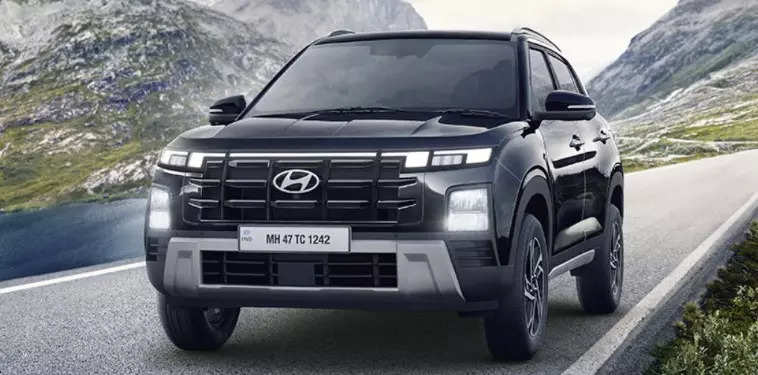
New Delhi: When Hyundai Motor India first announced its intent to set up shop in India nearly three decades ago, nobody really stood up and took notice.
To most Indians, this was a Korean auto brand which clearly was not in the same league as a Toyota or Honda which had a more familiar feel in this part of the world. From Hyundai’s point of view, this was not something to worry about since there were more important tasks on hand. The company had zeroed in on Sriperumbudur near Chennai for its India car project and there was a lot of work ahead in commissioning it quickly.
Today, as the parent company gets set to divest 17.5% of its shareholding in Hyundai Motor India through an initial public offering totalling nearly USD 3 billion, it marks a triumphant journey of its aggression and never-say-die attitude in this intensely competitive car market. While it remains to be seen how successful the IPO will end up being, there are no two ways about the fact that people now comfortably relate to Hyundai as a premium auto brand. This holds true for customers in advanced markets across Europe and the US too.
Sentiments in India were quite different though in the 1990s when the Centre had opened its gates to multinational car investments and a slew of big names began entering the market. Hyundai was one of them and it was quite unknown even though there was another Korean automaker in the form of Daewoo which had tied up with DCM for a car venture.
1998 Auto Expo
During this time, Telco (the then Tata Motors) was in the news for its all-new car project which would offer the best in comfort and mileage. Ratan Tata, the Chairman of the Tata Group, was determined to offer customers a product which would satiate their key requirements. The car was scheduled to be unveiled at the January 1998 Auto Expo in New Delhi.
Hyundai was also getting set for this big event where its Tall Boy, Santro, would also be unveiled. Daewoo, likewise, was ready with its compact Matiz though reports had already begun doing the rounds that its parent company in South Korea was in deep trouble and on the verge of bankruptcy. This was also the period when the Centre and Suzuki were at loggerheads over a host of issues at Maruti Udyog (as it was then called) where they were partners.
There was clearly a nationalistic fervor at the Expo with most of the footfalls happening at the Tata Pavilion where the Indica was unveiled amidst much fanfare by Murasoli Maran, the then Industries Minister. Terming it the Kohinoor of India, his words sent the crowd into a tizzy even while other rival automakers watched with concern and envy.
Hyundai was one of these onlookers even while its own Santro compact car had been unveiled earlier to a mixed response. Its radical design evoked extreme reactions hovering between admiration and apathy but the bottomline was that it had caused people to sit up and take notice. While the Indica was the showstopper at the Auto Expo, the Santro also emerged as a talking point.
The Tall Boy offering was to grow from strength to strength over the years and laid the base for the Hyundai phenomenon which was to be the first serious rival to the domination of Maruti in the market. The roping in of Shah Rukh Khan as brand ambassador was a masterstroke with the emerging superstar of Hindi cinema giving his approval to Hyundai and its range.
King Khan and Hyundai
In an interview with this writer in 2018, SRK had discussed his decades-long relationship with the Korean automaker and the first commercial. “We all worked on it and it was very interesting advertising. I still remember that it was shot at Filmistan,” he said.
SRK was also categorical about the fact that more than the brand ambassador association, it was finally the product that mattered. “I am a big believer that the product works because of the product, and not because you are the ambassador or face that represents it,” he reiterated.
“If the product is good, it doesn’t make a difference how you market it or who you market it to. People will come for it because the quality is good. That is the learning experience for me as an actor and a professional. Just work at your core and try to be the best product possible that changes lives, even as an actor. I think that is what matters finally,” SRK had said.
Praise from Hyundai also came from Jacques Manlay, who was Managing Director of the jinxed PAL-Peugeot entity which wound up in late-1997. The joint venture of Automobiles Peugeot and Premier Auto was among the early birds to India and kicked off operations with the Peugeot 309 at a facility in Kalyan near Mumbai.
However, a series of setbacks right from a labour strife and shortage of kits to a bitter falling out between the partners led to Peugeot taking a decision that it was not worth its while continuing business in India. Manlay moved on to other assignments within Peugeot and post-retirement met this writer in Paris around 2016.
Focus on localisation
While going down memory lane, he had this to say: “I remember being particularly impressed with Hyundai which had also entered the country in 1996. The company was focusing extensively on localisation since this was imperative for a cost-effective operation to be in place.”
In contrast, Peugeot (like other automakers from the West) was still heavily reliant on imported kits which would then be assembled at its Kalyan plant. According to Manlay, this comparatively casual attitude had to do with the fact that the company, like other global automakers, was doing well in its home market.
India was a different kettle of fish and there was really no compelling reason to step on the gas. Simply put, this meant that companies like Peugeot did not see why it was important to have a India-specific strategy when things were pretty much on course back home in Europe.
Daewoo and Peugeot were among the earliest entrants into India and also the first lot to get out. In the case of the former, it was a case of bad luck since is parent company had gone belly-up but with Peugeot, it just chose to take the easy way out and call it a day.
Through the years, Ford and General Motors have also shut down their Indian operations while Honda has shut down one plant and is continuing operations with the other. Hyundai, on the other hand, has been launching new and exciting products with technology as its calling card. It recently bought out the General Motors plant near Pune where it is all set to begin production aggressively.
Kia on a roll
Kia, which is part of the Hyundai Motor group, has quickly made a mark in India with successful products like the Seltos and Sonet. It operates from a plant in Andhra Pradesh and, while being a fierce rival to Hyundai, also benefits from synergies at the backend, which includes the R&D setup in Hyderabad.
These strengths will come in handy once the two Korean entities work on a strategy in place for the future which includes electrification, fuel cells etc. It is in this context that the proceeds of the IPO could be put to good use since the outlay in the coming years will be substantial.
Incidentally, MG Motor India had also indicated earlier that it would be looking at an IPO around 2028 once it roped in an Indian ally first. That objective has been met with the JSW Group now coming onboard with a 35% stake and SAIC of China retaining the balance 65%.
The reasons for MG Motor to opt for this route largely stem from the lukewarm relations between Indian and China where direct investments are not possible at this point in time. This was what caused Great Wall Motors to shelve its India project as also Changan Automobile which saw no reason to enter this market once it became apparent that Chinese investments were not welcome.

















